Following a draw in game 14, Ding Liren and Ian Nepomniachtchi are both on seven points and are headed for a final tie-breaker in the FIDE World Championship
It was the game which could have decided everything. However, after a failed attempt by Ding to organise an attack early on, the two players went for an exchange of queens transpiring into an even position where Black had a slight edge. In the end, Nepomniachtchi was pushing for a victory in an even rook endgame, trying to drain his opponent’s energy and break him, but Ding defended well.
In the first few moves of the Nimzo-Indian Defence, Ding and Nepomniachtchi followed the opening moves of game five in which the Chinese player achieved a decisive advantage but failed to capitalise on it. Ding decided to deviate from that game on move five but the position was calm as both sides were still in the opening phase.

However, on move 12, Ding decided to start an attack on the black king’s castle. The move was coated with ideas of making brave and fierce sacrifices on the board, evoking the romantic era of chess where the player’s character and audacity were above calculation and precision. Nepomniachtchi wasn’t fazed by this and brushed off White’s overly ambitious advances.
Ding was soon forced to confess that his idea had failed. He then went on for an exchange in the centre, leading to the queens and several pieces being removed from the board. The resulting position was even, with White’s doubled pawns giving Black a slight advantage.
Undeterred, Ding opted for another ambitious and risky plan – to temporarily give up a pawn to get some activity – but ended up with his pieces being more exposed across the board. As the game moved on, the nature of the position was becoming ever more uncomfortable for White. Although the world championship was hanging on this game, Ding opted for risky strategies which effectively gave way to Black.
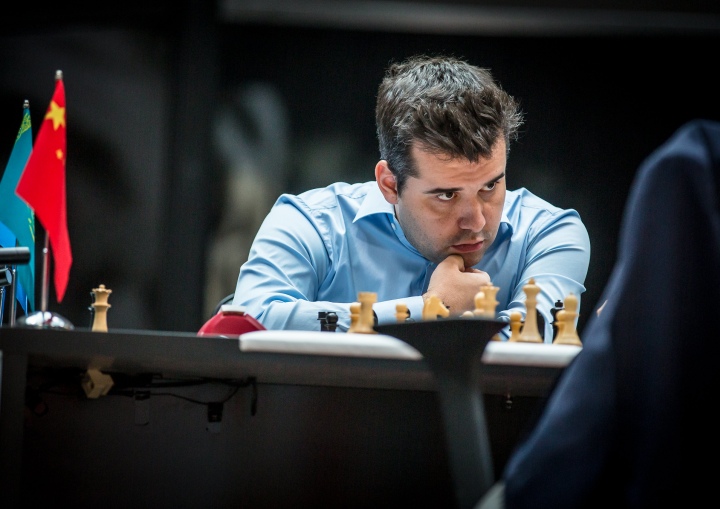
At one point Nepomniachtchi achieved a significant advantage but with one imprecise move, he let White level the game. Despite treading a fine line, Ding managed to maintain his position and eventually discovered a splendid combination to simplify the game and reach a rook endgame where he was a pawn down but the position was even. Nepomniachtchi pushed on and Ding had to be very precise to prove he could hold a draw.
Just as it seemed we were on the brink of a threefold repetition, Nepomniachtchi decided to play on as he sent his king towards the left flank and allowed Black to capture a pawn on the kingside. Despite things getting sharper and Ian trying to unsettle White, Ding found the precise moves to keep the position even. Nepomniachtchi was gradually chipping away at Ding’s time and nerves, hoping he will break at one point. However, the Chinese player managed to hold.
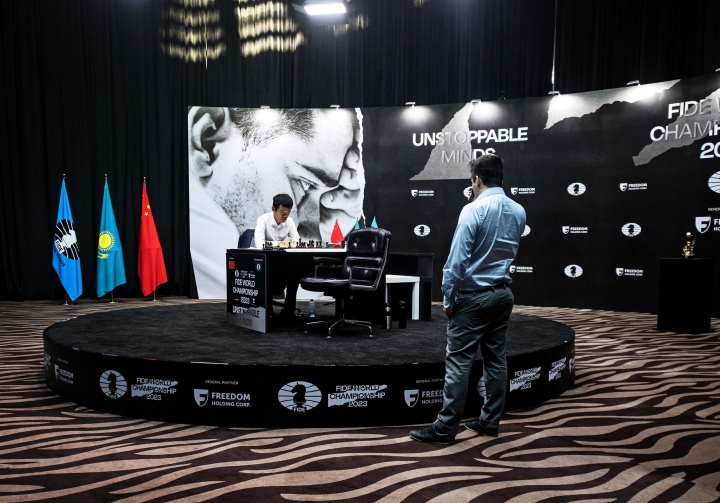
After trying every single approach to find victory, on move 90 and after six and a half hours of play, the final classical game of the 2023 FIDE World Championship match ended in a draw.
It remains to be seen whether this long and draining game will impact the players in their tie-break showdown on Sunday.
In the drawing of lots it was determined that Ding Liren will be leading white pieces in the first game of the tie-breaks.
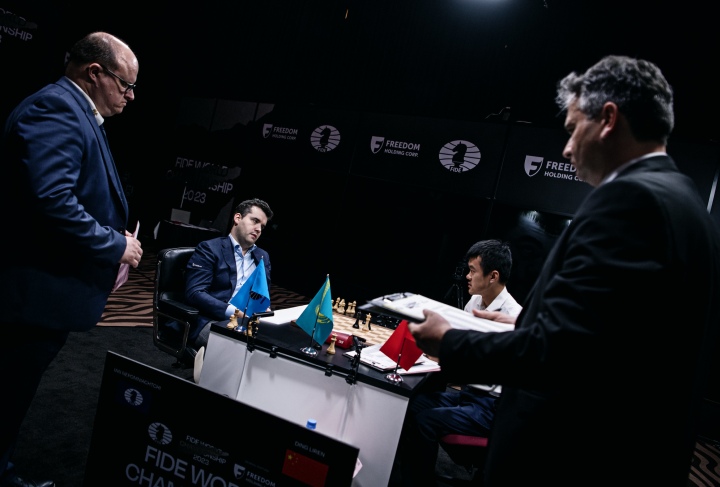
Here follows a closer look at game 14 of the match.
After 13 games which saw seismic swings in the play and the result, the score was even: 6.5 to 6.5. It was all down to the final, 14th game of the match.
Ding Liren – who has played the role of the underdog throughout the match – was leading white pieces. Some five minutes before the round, Ding Liren arrived at the board, meticulously readjusting each white piece before scribbling his opponent’s name on the score sheet. As he took a sip of water, Ian Nepomniachtchi strode in – in a blue shirt and not wearing a jacket. The two rivals exchanged a handshake without meeting each other’s gaze. Ding stood up, removing his jacket and placing it on the back of his chair. The atmosphere was charged with anticipation as both players maintained an air of stoic calm, neither daring to make eye contact.
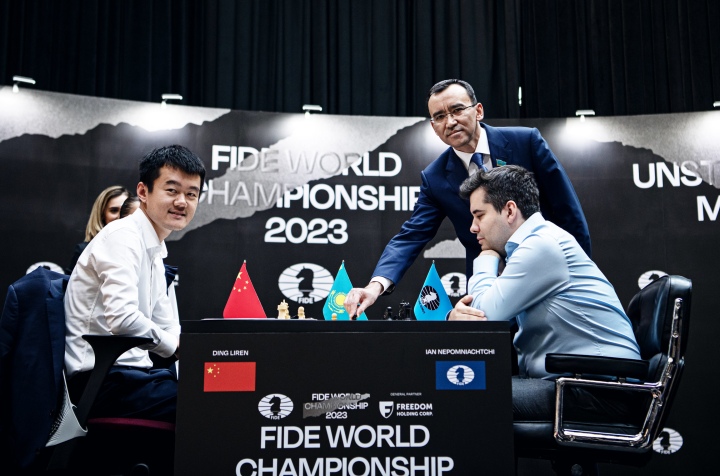
The first move was made by MäulenÄşimbaev, The Chair of the Senate of Kazakhstan and Alanna Berikkyzy, winner of the FIDE World School Chess Championship.
As the Chief Arbiter Nebojsa Baralic started the clock the two players shook hands. It was the first time their eyes met, but only for a second.
1.d4 Played by Ding.1…Nf6 2.c4 e6 3.Nc3 Bb4 Ian opted for the Nimzo-Indian Defence. This opening was seen once before in the match, in game eight where Ding Liren surprised Nepomniachtchi in the beginning, achieved a winning position but then dropped it all and allowed him to draw.
“Quite exciting to see this. It reveals Ding’s attitude – he’s not going to play it safe I guess”, said Grandmaster Daniil Dubov upon seeing the opening moves.
“The Nimzo is an invitation for a big game which Black cannot really avoid”, he added.
In this opening, Black usually gives up a bishop pair but gets a better pawn structure and easier development as compensation.
In the Rubinstein variation after 4.e3 0-0 5.Bd2 Ding chose not to play 5.a3 as in game eight, but a different move which has become popular in recent years. “A super solid 5.Bd2 Nimzo”, former world champion Vishy Anand called it.
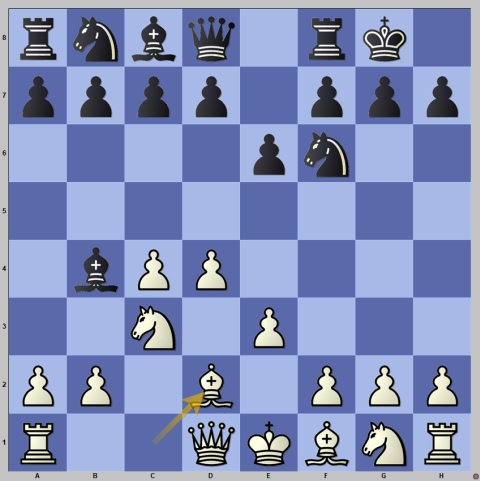
Ding stood up as he made the move, while Nepomniachtchi mischievously smiled when he saw what was on the board. “I didn’t buy it” said Nepo after the game, explaining his reaction. “I just didn’t see how it would work”.
The opponents followed the footsteps of Donchenko and Wojtaszek (2021) up to move nine when Ian introduced a sensible novelty 9…dxc4, which is the first line of Stockfish.
From this point on, Ding started spending more time thinking. “Ding is clearly out of the book here”, Dubov noted.
Just a few moves later Ding quickly played 12.Ng5 demonstrating aggressive intentions.
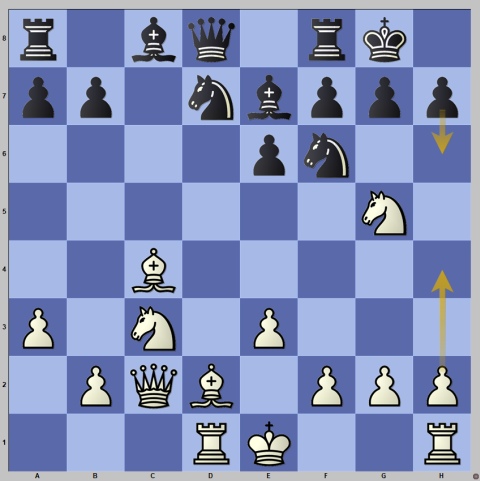
The first critical moment of the game.
The computer did not like this move and the bar moved in favour of Black. 12.e4 is considered the best, threatening to move the pawn to e5 and create a pin on d6 and f6.
Instead, with 12.Ng5 Ding is starting to raise the stakes and threaten more openly. The move suggests an aggressive plan with h4 after 12…h6 and a pin on e6.
Ian rolled up his sleeves – the first time he did that in the match – and spent 10 minutes assessing the situation.
12…h6 13.h4 “I don’t believe in this [attack]”, said Grandmaster Robert Hess. “To see this in the World Championship [makes me feel] happy as it feels like the romantic era of chess is back. At the same time, I’m looking at this and it feels wrong”.
In the post-game interview, Ding Liren said he got “very excited” about the 12.Ng5 move and the idea behind it, but afterwards realized he “had to go into defence mode”.
“Obviously I played Ng5 for a win. At that point, I thought that it might be a decisive game. But I was unlucky in the endgame,” said Ding
13…Qc7 A natural and best move for Black. He is showing he does not feel intimidated and plays it steadily.
14.Be2 Played after 21 minutes of thinking. 14.Bb3, keeping a pin on the black king, was considered better.
After a series of good defensive moves by Ian, Ding retreated from the attack acknowledging it didn’t work out. Soon, the queens are off the board, White’s ambitions to organise an attack with Ng5/h4 evaporated and the position is even with Black having somewhat more chances for an initiative.

21.Nc5? A risky move by Ding. He decided to temporarily sacrifice his g2 pawn but in the long run, ends up in an unpromising position as his pawns were exposed.
“Ding takes such responsible decisions when a loss means he loses the match. This is pretty remarkable”, said Fabiano Caruana. “A risky decision when the entire match hangs on the line.”
21…Bxg2 22.Rg1 Bd5 23.e4 Bc6 24.b5 Be8 25.Nxb7 White’s pawns and pieces are more exposed and Black is the only side which has chances to play for a win.With 40 minutes on the clock and 15 moves until the first time control, Ding was walking through the minefield.
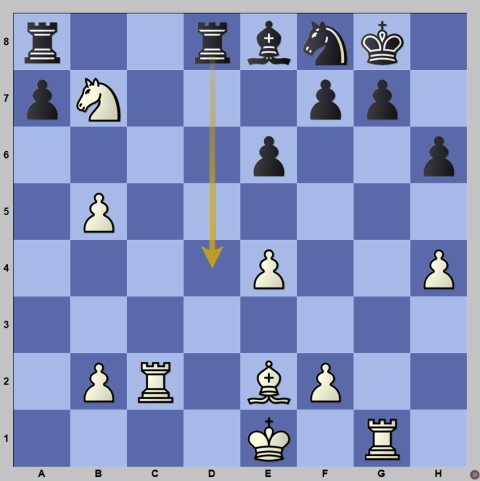
25…Rd4! 26.Rc4 Rd7! excellently played by Nepo, not allowing White to simplify by getting his bishop to c4 and opening the e2-square for his king. White has a problem with activating his g1-rook.
27.Nc5 Rc7 Threatening with taking on b5 and pinning the knight, but in the hindsight 27…Rd6 was a slightly better option.
Eventually Black put pressure on pinned c5-knight whereas Ding decided to try his luck on the kingside.
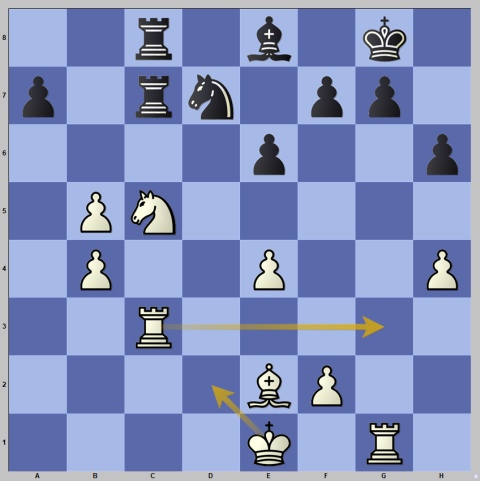
30.Rcg3? Played quickly by Ding. The computer said this was a mistake and that Black is much better now. Ian looked surprised when he saw White make the move.
30…Nxc5 31.bxc5 Rxc5 Ian calculated that the threats to his king are not worth not picking up a pawn on d5.
32.Rxg7 Kf8 33.Bd3 Rd8 33…Rc3 or 33…Ke7 were considered better options for Black. Now, the position is again close to equal but Ding is the one who has to be more careful.

34.Ke2? A mistake, occupying an important square and restricting his own bishop.
34…Rc3 Played almost instantly by Nepomniachtchi. Ding found himself in real trouble as 35.R1g3 fails to 35…Rxd3 36.Rxd3 Bxb5 and the rook and the king are pinned.
However, Black has a save with 35.Rg8+ Ke7 36.Rg1-g3 Rdxd3 37.Rxe8+ and now, with the Black bishop eliminated, White can safely take on e3.
35.Rg8+ Ke7 36.R1g3 e5?“A move that spoils the advantage”, confessed Nepomniachtchi after the game.
Erasing Black’s advantage. 36…Rb3, putting pressure on the b5-pan and getting the other rook down the d-file was more dangerous for White.
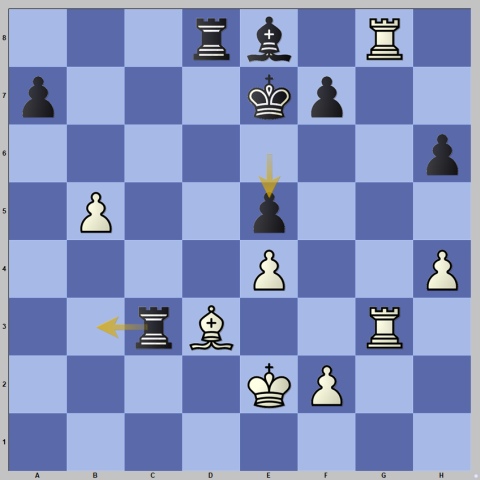
37.Rh8+ Rd6
And now Ding found the best move 38.b6! Rxb6 39.Rxe8+ Kxe8 40.Bxb5+ Rxb5 41.Rxc3 Kd7 And, although Black is a pawn up, he can hold a draw in the rook endgame that emerged.
With a pawn up and standing better on time, Nepomniachtchi continued to press his opponent. Ding however placed his rook behind Black’s passer and chose the most optimal defensive moves.
Ian made his last attempt by sacrificing a pawn and sending his king to the queenside but with the timely 65.f4! Ding created a passer of his own that offered him sufficient counterplay.
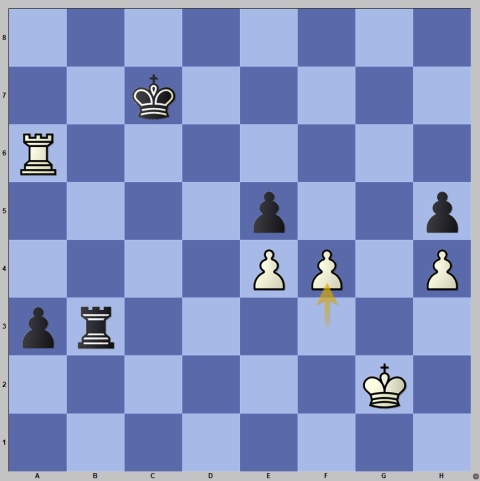
On move 90, the two agreed to split a point.
Everything will now be decided in the tie-breaks, which will take place on Sunday, 30th April at 3 PM local time in Astana.
In the post-game interview, the players were asked which game in the match was most difficult for them.
Nepomniachtchi avoided the answer: “All games were difficult in their own way. I wouldn’t specify one.”

Ding, on the other hand, was more forthcoming: “In the seventh game I was in time trouble and I suddenly got lost in my thoughts. I couldn’t make a decision. That also influenced me in the game afterwards”, said Ding.
The players were finally asked about how difficult it is to adapt to rapid following a long match played under classical time control.
“We have half a day to rest and think about the rapid games”, said Ding, without being more specific. “We’ll see” was Ian’s response.
After the press conference, a drawing of lots was held for the tie-breaks. Ding Liren was given the honour of making the first choice, as Nepomniachtchi was given the honour for the classical part of the match. Ding picked up the box with white pieces meaning he will have the advantage of the first move in game one of the tie-breaks.
The tie-breaks
The World Champion will be decided in a four-game rapid playoff with a time control of 25 minutes plus a 10-second increment per move. There shall be a drawing of lots to decide which player starts with white pieces.
If the score is still a tie after four rapid games, another two-game playoff shall be played with a time control of five minutes plus three seconds increment per move.
If the score is still level, another two-game playoff shall be played with the same time control. If the score is still even after this game, a single game shall be played with a time control of three minutes for each player plus two seconds increment per move, and these games will continue until a decisive result is reached.
You can find more details on the tiebreak regulations and the match on this link.
Text: Milan Dinic
Photos: Stev Bonhage, Anna Shtourman
Official website: worldchampionship.fide.com/
About the match
The 2023 FIDE World Chess Championship match between Grandmasters Ding Liren and Ian Nepomniachtchi takes place from 7th April to 1st May 2023 in Astana, Kazakhstan.
The match consists of 14 games, followed by a rapid/blitz tiebreak in case of a tie.
The time control for the standard games is 120 minutes for the first 40 moves, followed by 60 minutes for the next 20 moves, and then 15 minutes for the rest of the game, with an increment of 30 seconds per move starting from move 61.
The first player to reach 7,5 points in the 14 games will win the match. If it’s a tie, the two go to tiebreaks.
The prize fund for the match is two million euros, with the reward being split 60:40 between the winner and the runner-up.


